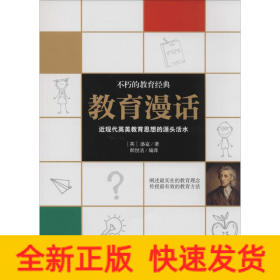
英语反身代词和宾语代词的二语习得研究
全新正版 极速发货
¥ 42.62 6.3折 ¥ 68 全新
仅1件
广东广州
认证卖家担保交易快速发货售后保障
作者姜琳
出版社科学出版社
ISBN9787030340627
出版时间2012-05
装帧平装
开本其他
定价68元
货号1201065086
上书时间2024-06-08
- 最新上架
商品详情
- 品相描述:全新
- 商品描述
-
目录
Acknowledgements
前言
Abstract
Chapter I Universal Grammar and Second Language Acquisition
1.1 Introduction
1.2 UG and SLA
1.2.1 Principles and Parameters of UG
1.2.2 SLA
1.2.2.1 The Binding of Reflexives
1.2.2.2 The Licensing of Null Objects
1.2.3 Three Major UG-based SLA Theories
1.2.3.1 The Full Transfer Full Access Hypothesis
1.2.3.2 The Minimal Trees Hypothesis
1.2.3.3 The Failed Functional Features Hypothesis
1.3 Summary
Chapter 2 Cross-Linguistic Variation on the Binding of Reflexives and Licensing of Null Objects
2.1 Introduction
2.2 Cross-linguistic Variation on the Binding of Reflexives
2.2.1 The Parameterized Approach
2.2.2 The Move-to-Infl Approach
2.2.3 The Relativized SUBJECT Approach
2.2.4 A New Approach to the Cross-linguistic Variation on the Binding of Reflexives
2.3 Cross-linguistic Variation on the Licensing of Null Objects
2.4 The Binding of Reflexives and the Licensing of Null Objects.
2.5 Summary
Chapter 3 Studies on the Acquisition of Reflexive Binding and Null Objects
3.1 Introduction
3.2 Reflexive Binding in L1 Acquisition
3.3 Reflexive Binding in L2 Acquisition
3.3.1 Hirakawa (1990)
3.3.2 Yuan (1994)
3.3.3 MacLaughlin (1998)
3.3.4 Thomas (1995)
3.3.5 Jiang (2009b)
3.3.6 White et al. (1997)
3.4 Null Objects in L1 Acquisition
3.5 Null Objects in L2 Acquisition
3.5.1 Yuan (1997)
3.5.2 Park (2004)
3.6 Summary
Chapter 4 Main Study
4.1 Introduction
4.2 The Study
4.2.1 Subjects
4.2.2 Materials and Procedure
4.3 Results
4.3.1 Reflexive Binding
4.3.1.1 Group Results
4.3.1.2 Individual Results
4.3.1.3 Summary
4.3.2 Null Objects
4.3.2.1 Group Results
4.3.2.2 Individual Results
4.3.2.3 Summary
4.3.3 Correlation between Reflexive Binding and Null Objects
4.4 Summary
Chapter 5 Discussion
5.1 Introduction
5.2 A-Binding/A-Binding Asymmetry
5.2.1 Native Language Transfer in L2 Acquisition
5.2.2 Learning Strategies in L2 Acquisition
5.2.3 A New Approach Involving an Interaction of the L1 Grammar and the L2 Input
5.2.3.1 Morphological Complexity of the English Reflexive
5.2.3.2 Binding to Non-Subjects
5.2.3.3 Overt Agreement Morphology
5.2.4 The Implications of the Findings for UG-based SLA Theories
5.3 The Finite/Non-finite Asymmetry in the A-Binding Domain
5.4 The A-bound/A-bound Null Object Asymmetry in the A-binding Domain
5.5 Conclusion
References
Appendix Ⅰ The Main Test
Appendix Ⅱ The Proficiency Test
内容摘要
本书探讨了英语人称代词的母语和二语习得研究。这里的人称代词包含反身代词和第三人称代词。在对相关的文献详细综述后,本书进行了一项实证研究,即比较不错英语水平的中国学生在英语反身代词以及宾语代词两个领域的习得。实验结果表明,他们对前者局部约束性的掌握远好于对后者有形性的掌握。这一现象可以通过语法分析理论得到解释:参数的重新设定要靠语言依据来激活;如果二语输入中缺少能够激活参数值重新设定的语言依据,那么即使处在不错英语水平阶段,二语学习者的中介语依然会呈现母语的参数值特征。
— 没有更多了 —












以下为对购买帮助不大的评价